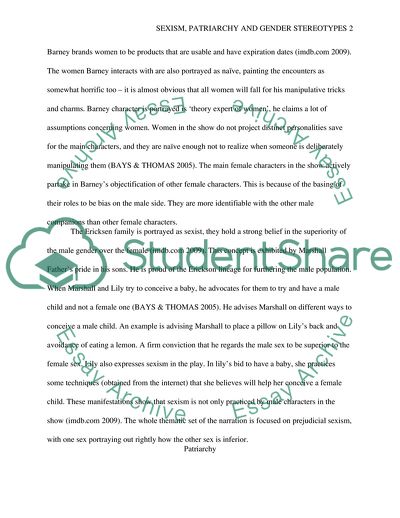Cite this document
(Sexism, Patriarchy and Gender Stereotypes on television show 'How Essay, n.d.)
Sexism, Patriarchy and Gender Stereotypes on television show 'How Essay. https://studentshare.org/gender-sexual-studies/1874161-sexism-patriarchy-and-gender-stereotypes-on-television-show-aposhow-i-met-your-motherapos
Sexism, Patriarchy and Gender Stereotypes on television show 'How Essay. https://studentshare.org/gender-sexual-studies/1874161-sexism-patriarchy-and-gender-stereotypes-on-television-show-aposhow-i-met-your-motherapos
(Sexism, Patriarchy and Gender Stereotypes on Television Show 'How Essay)
Sexism, Patriarchy and Gender Stereotypes on Television Show 'How Essay. https://studentshare.org/gender-sexual-studies/1874161-sexism-patriarchy-and-gender-stereotypes-on-television-show-aposhow-i-met-your-motherapos.
Sexism, Patriarchy and Gender Stereotypes on Television Show 'How Essay. https://studentshare.org/gender-sexual-studies/1874161-sexism-patriarchy-and-gender-stereotypes-on-television-show-aposhow-i-met-your-motherapos.
“Sexism, Patriarchy and Gender Stereotypes on Television Show 'How Essay”. https://studentshare.org/gender-sexual-studies/1874161-sexism-patriarchy-and-gender-stereotypes-on-television-show-aposhow-i-met-your-motherapos.


